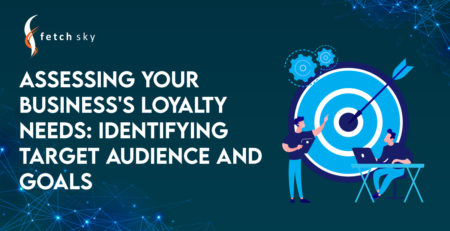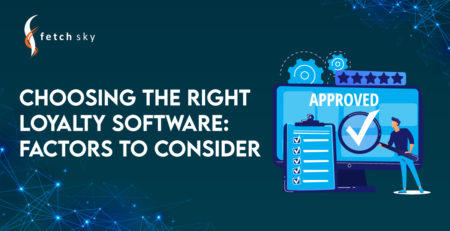Choosing the Right Incentives for Customer Participation
Customer incentives are rewards that a brand gives customers for completing certain brand-building behaviors. They can take many forms, including reward points, discounts, freebies, advance access to newly released products, or exclusive sales.
But regardless of the form these customer incentives take, they’re aimed at encouraging customers to perform and repeat behaviors that help your brand. They aren’t just rewards for making purchases (although purchases are the most popular behavior to reward.)
~Source
Introduction
In the fiercely competitive market, attracting and retaining customers is an ongoing challenge for businesses. Digital loyalty programs offer a compelling solution by providing incentives for customer participation and engagement. However, to ensure the success of a loyalty program, choosing the right incentives is crucial. In this comprehensive blog, we will explore the importance of selecting the appropriate incentives, the different types of rewards to consider, and key strategies for designing a compelling loyalty program that motivates customers to actively participate.
You can read our blogs to know what a Digital Loyalty Solution exactly is, its benefits, how it can boost customer retention, and how to make an attractive loyalty program. You can also find steps to integrate it into your websites and into your apps and into your business systems as well. Moreover, there’s a gaming option you can add to your loyalty program, you can find out more about that as well. For in-depth personalization details in Digital Loyalty Programs, click here. Defining Goals is another important for Loyalty Program, read more.
Understanding the Power of Incentives for Customer Participation
Incentives for customer participation are at the core of any effective loyalty program. They serve as the driving force that encourages customers to participate in the program, make repeat purchases, and engage with the brand on various levels.
Well-chosen incentives not only attract new customers but also retain existing ones. The right incentives can create a sense of exclusivity, making customers feel valued and appreciated, thereby strengthening their emotional connection with the brand.
Effective incentives also drive customer behavior and influence purchasing decisions. By offering rewards that align with customer interests and preferences, businesses can steer customer actions towards desired outcomes, such as increasing order frequency or promoting higher spending.
Types of Right Incentives for Customer Participation in a Digital Loyalty Program
 Points-Based Rewards:
Points-Based Rewards:- Accrual Mechanism: Customers earn loyalty points for specific actions, typically for making purchases. Points can also be awarded for activities like referrals, social media engagement, or writing reviews.
- Redemption Options: Loyalty points can often be redeemed for a variety of rewards, including discounts on future purchases, free products or services, exclusive merchandise, or even cashback.
- Versatility: Points-based systems are versatile and can be customized to suit various business models. They allow for the flexibility to adjust the value of points and the range of rewards offered.
Tiered Loyalty Programs:
- Progressive Benefits: Tiered programs segment customers into different levels or tiers based on their engagement and loyalty.
- Gradual Advancement: Customers start at a basic level and can progress to higher tiers by meeting specific criteria, such as spending a certain amount or making frequent purchases.
- Increasing Rewards: Each tier unlocks a new set of benefits, which can include exclusive access to events, faster point accumulation, dedicated customer support, or early access to product releases.
- Encouraging Loyalty: Tiered programs encourage customers to remain engaged over time, striving to reach higher levels for more significant rewards.
Personalized Offers:
- Data Utilization: Personalized incentives rely on customer data, such as purchase history, browsing behavior, and demographic information.
- Tailored Rewards: These programs provide individualized offers that align with a customer’s preferences and behavior, making them feel appreciated.
- Examples: Personalized incentives can include custom discounts on frequently purchased items, birthday rewards, or recommendations based on past purchases.
- Enhanced Engagement: By tailoring offers to specific customers, businesses can increase the relevance and effectiveness of their loyalty program, leading to higher engagement and retention rates.
Cashback and Rebate Programs:
- Direct Monetary Benefits: Cashback programs offer customers a percentage of their purchase amount back as cash or credit.
- Predictable Value: Customers appreciate the transparency and immediate value of cashback, as they can calculate their savings easily.
- Enhancing Loyalty: Cashback programs can foster long-term loyalty, as customers are incentivized to keep making purchases to earn more cashback.
Gamification and Challenges:
- Game Elements: Loyalty programs can incorporate gamification elements like challenges, badges, or competitions to engage and entertain customers.
- Achievement-Based Rewards: Customers earn rewards by completing specific challenges or achieving milestones, creating a sense of accomplishment.
- Entertainment Value: Gamification adds an element of fun and competition to the loyalty program, making it more enjoyable for customers.
Subscription-Based Benefits:
- Exclusive Access: Customers subscribe to a loyalty program that offers exclusive benefits, such as early access to sales, members-only events, or free shipping on all orders.
- Predictable Value: Subscription-based loyalty programs provide a predictable value proposition, making them attractive to customers who value ongoing perks.
Strategies for Designing a Compelling Loyalty Program
Know Your Audience Intimately:
- Segmentation: Beyond general demographics, segment your audience based on behavior, purchase history, and preferences. This allows for tailored rewards and communications.
- Customer Surveys: Conduct regular surveys or feedback sessions to understand evolving customer needs and desires.
- Data Analytics: Leverage data analytics tools to gain deep insights into customer behavior, helping you refine your loyalty program over time.
Surprise and Delight Moments:
- Random Rewards: Implement unexpected bonuses or rewards at random intervals. For example, surprise loyal customers with a free gift on their birthday or a spontaneous discount.
- Personalization: Tailor surprises based on individual preferences or past interactions to make customers feel truly valued.
- Anniversary Celebrations: Acknowledge customer anniversaries with your brand to evoke a sense of nostalgia and appreciation.
Gamification with Precision:
- Strategic Game Design: Carefully craft game elements within your program, ensuring they align with your brand identity and resonate with your audience.
- Progression System: Develop a structured progression system with achievable milestones that reward customers as they advance, creating a sense of accomplishment.
- Leaderboards and Social Interaction: Incorporate leaderboards and social sharing features to foster friendly competition and encourage customers to engage with others in the program.
Partner Rewards for Added Value:
- Strategic Alliances: Choose partner brands or businesses that complement your products or services. This ensures that joint rewards resonate with your customer base.
- Cross-Promotion: Collaborate with partners to cross-promote each other’s loyalty programs, broadening your customer reach.
- Exclusive Co-Branded Rewards: Create unique, co-branded rewards or experiences that customers can only access through your partnership, enhancing the perceived value of your program.
Communication and Engagement:
- Multi-Channel Engagement: Reach out to customers through various channels, including email, SMS, mobile apps, and social media, to keep them informed and engaged.
- Personalized Messaging: Use customer data to tailor your communications. For instance, send product recommendations or reward updates that align with individual preferences.
- Feedback Loops: Establish mechanisms for customers to provide feedback and suggestions, showing that you value their input and are willing to adapt the program to their needs.
Transparent and Attainable Rewards:
- Clear Reward Structure: Ensure customers easily understand how to earn and redeem rewards. Transparency builds trust.
- Attainable Milestones: Set achievable goals and milestones to prevent frustration and maintain motivation.
- Regular Updates: Keep customers informed about their progress toward rewards, fostering anticipation and excitement.
Continuous Optimization:
- Data-Driven Improvements: Continuously analyze program performance and customer feedback to make data-driven adjustments and improvements.
- A/B Testing: Experiment with different incentives, communication strategies, and gamification elements to discover what resonates best with your audience.
Conclusion
Choosing the right incentives for customer participation in a digital loyalty program is a pivotal aspect of its success. Incentives for customer participation foster brand loyalty, and cultivate long-term relationships.
The variety of incentives, including points-based rewards, tiered programs, and personalized offers, cater to different customer preferences and interests. By understanding the target audience, incorporating surprise rewards, integrating gamification, and exploring partner rewards, businesses can design a compelling loyalty program that resonates with customers, drives engagement, and propels business growth.
To get a complete guide for Digital Loyalty Solutions, Click Here.







